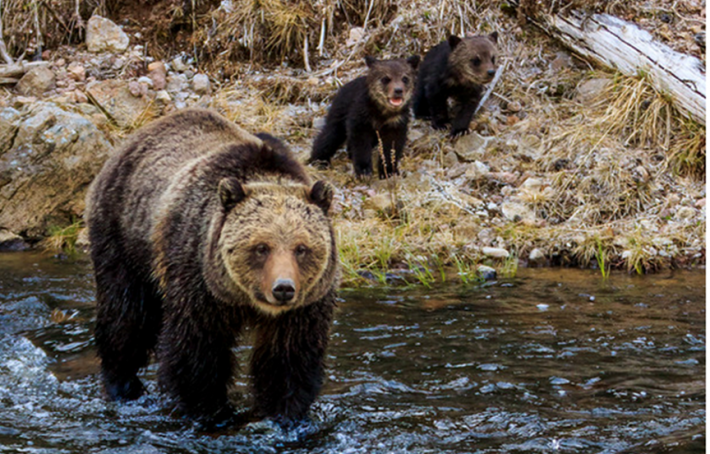Lactating grizzly bears use cooling baths to avoid heat stress
University of Idaho press release.
Grizzly bear mothers in Yellowstone National Park take cool “baths” to avoid overheating, finds new research published in Functional Ecology.

Taking a bath to relieve stress isn’t unique to humans. Bears do it too, and although they appear to enjoy taking a dip, it probably functions to help them cool down.
A recent study led by University of Idaho graduate student Savannah Rogers and Associate Professor of Wildlife Sciences Ryan Long shows that grizzly bears in Yellowstone National Park take “baths” in cool water to help prevent overheating.
Because the body temperature of mammals rises during lactation, bath-taking by female grizzly bears in the park may help facilitate increased milk production and ensure offspring survival.
In a paper published in Functional Ecology, a journal of the British Ecological Society, a collaborative team of researchers from the U of I, Washington State University, the University of Wisconsin-Madison and U.S. Geological Survey studied how the risk of heat stress was influenced by activity and milk production in grizzly bears. The team also evaluated the importance of bear behaviors such as bath-taking (i.e., submerging in cool water) for alleviating that heat stress.
“We found that the activity level of lactating female grizzly bears was much more limited by heat than the activity of non-lactating females, and that this disparity increased in a warmer climate scenario,” Long said.
Using computer models, the researchers sought to predict the potential effects of a changing climate on female grizzlies with versus without cubs.
Rogers said:
We found that the use of ‘bathtubs’ by female bears to cool could help them overcome constraints on activity and milk production imposed by heat, even in a warmer climate
The “bathtubs” include natural depressions containing water that are deeper than the wallows commonly used by ungulates such as elk and allow bears to fully submerge.
Researchers learned that although heat was not the most important factor influencing the distribution of bears across the Yellowstone landscape—elevation and distance to roads were most important—it had a greater effect on the behavior of lactating than non-lactating females, and access to pools of cool water was an important mechanism for relieving heat stress.
“Our research suggests that as the climate warms, grizzly bears can avoid heat stress through behaviors such as ‘bath-taking’, and thus access to cool water will likely become increasingly important” Long said.
You can read the full article for free (for a limited time) here:
, , , et al. Thermal constraints on energy balance, behaviour and spatial distribution of grizzly bears. Funct Ecol. 2021; 00: 1– 13. https://doi.org/10.1111/1365-2435.13727
Like what we stand for?
Support our mission and help develop the next generation of ecologists by donating to the British Ecological Society.